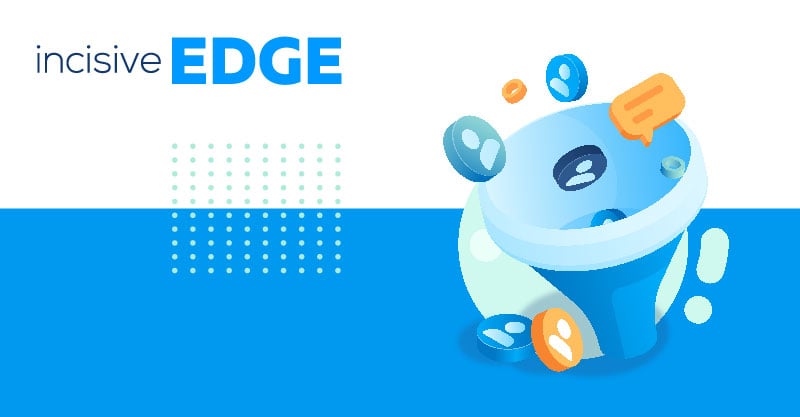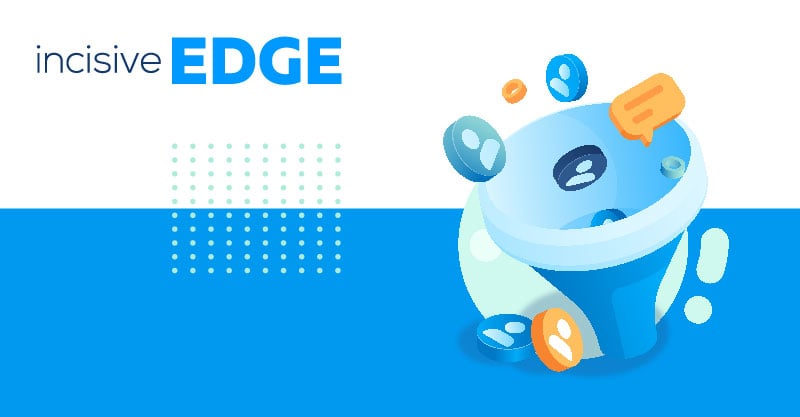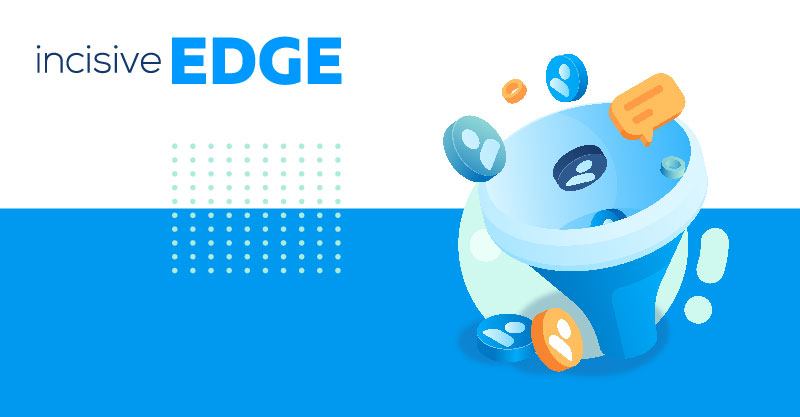To say there are big differences between inbound marketing and outbound marketing would be an understatement.
Not only are inbound and outbound marketing strategies fundamentally different, but they also play distinct roles in the sales funnel and in society's view of capitalism. Understanding the difference between inbound vs outbound marketing can help optimize your marketing strategy.
One simple way of looking at things might be that:
Inbound marketing gives your prospects information when it suits them. Outbound marketing gives your prospects information when it suits you.
Let’s think of it another way. When was the last time you sat down to watch your favourite TV show to relax after work, had it interrupted by an advertised advert and thought something to the effect of “Ah! I’m glad my favourite show was just interrupted by this ad”.
Your outbound marketing efforts tend to bring in a much lower ROI compared to your inbound marketing efforts.
You can apply the same scenario to just about every outbound marketing method going.
Providing relevant content and information is at the core of your inbound marketing strategy. Unlike outbound marketing, which focuses on pushing a message out to a broad audience, inbound marketing allows for targeted messaging based on the needs and interests of potential customers. Understanding the differences between inbound or outbound marketing can help you develop an effective outbound marketing strategy and optimise your sales funnel.
Ads, cold calls and other interruptions are irritating, interruptive and untimely. But, as an inbound marketing agency ourselves, it's easy for us to take such a stance. Our experience not just with our inbound marketing tactics but in digital marketing as a whole made optimising your inbound marketing efforts to achieve the highest ROI possible and highly probable.
Check out the following blogs to learn more about inbound marketing:
- What Are the Five Fundamentals of Inbound Marketing?
- 6 Important Reasons You Need an Inbound Marketing Specialist
- Top 5 problems inbound marketing solves for your business
- Top 10 reasons to work with an inbound marketing agency
It allows us to put you in front of your target audience to attract potential customers.
So are we being biased? Read on to find out more about these differences and to understand why we don’t think we’re being overly one-sided.
Your own experience of outbound marketing
The first proof point is your own experience. You know yourself that these things are true. You don't like being interrupted by outbound marketing methods, you don't like pushy salespeople, and you probably don't like adverts popping up in radio, TV or other forms of media. Outbound marketing benefits the sender, but outbound marketing focuses on the receiver.
And you’re not the only one;
A bold statement? Sound like hyperbole, perhaps? Find out why it’s neither of these things.
What counts as outbound marketing anyway?
Before we get into the specifics, let’s just be clear about what it is.
While there is no unquestionable doctrine stating what is and isn’t outbound marketing, industry experts generally agree on which practices fall under the umbrella.
Broadly speaking, the outbound list comprises the following:
- Cold calling
- Advertising, whether on TV, radio or online banner ads
- Conferences, seminars and trade shows
- Unsolicited email campaigns (for example, to purchased lists)
- Direct mail (a large amount of it is often junk mail)
For years, these marketing tools reigned supreme. They’re the old-school, classic marketing fundamentals.
The main problem is they don’t work very well any more. Not least because of a society-wide effort to stop them in their tracks.
The war on outbound marketing
It’s true, there’s a widespread, profitable and deliberate effort to stop this kind of marketing from reaching us.
Here are some examples:
- Spam filters to prevent email marketing
People are so sick of receiving marketing emails, there’s a huge market for spam filters. Hotmail, Gmail and other free services invest heavily in research and development to stop email shots and there are plenty of standalone products too. Right now, around 19% of corporate emails are unsolicited outbound marketing, and these products want to get that number to 0%.
- Caller ID and tech to prevent cold calling
Caller ID was introduced to house telephones with the selling benefit of not accepting any more cold calls. And there’s even standalone products such as the TrueCall, designed to block and blacklist “nuisance callers”, adding one more layer of protection to your prospects.
- Adblockers to stop online ads
Internet display ads are a form of outbound marketing that worked well for many years. But, these days, all it takes is spending around 60 seconds to install a browser plugin called Adblock (available for Chrome, Safari, Internet Explorer, Firefox and a whole host of standalone products, just in case you were wondering). All of the advertising showing up before a Youtube video, or plastered all over your favourite site are getting stopped in their tracks.
- Paid subs to radio ads
For radio services such as Spotify (and there are many other examples worldwide), you can stop advertising by paying a monthly subscription, thus removing one more layer of outbound marketing from your life.
- The battle to stop unsolicited junk mail
This one is a particularly hard-fought battle in the war on outbound. There’s a considerable effort from the Citizens Advice Bureau which recommends the Mailing Preference Service to stop unsolicited mail. Entire non-profit organisations have been set up and are working hard to end this marketing medium.
That’s a pretty serious war effort. But why all of this effort to shut down outbound marketing?
Inbound marketing offers relevant content to attract potential customers, while TV ads and other outbound marketing examples use interruptive tactics to push products or services. This highlights the difference between inbound and outbound marketing methods and their influence on the acquisition of inbound leads.
Inbound marketing is how people want to be marketed to in the 21st century. It’s informative and not interruptive. It’s designed to help, inform and educate and it’s there when your prospects need it.
Inbound marketing is there when people need it
So it seems everybody wants to avoid outbound marketing. So much so, they’re actually willing to pay for products and services to help them achieve precisely that.
People are sick of the hard sell and because we now have impressively effective search engines, there’s absolutely no need for us to make decisions based on persuasive ads or salespeople.
We don’t need sales spiel because we can find unbiased, easily verifiable information and social proof on products and services. This is where inbound marketing starts playing its role.
- Search engines
Everybody uses search engines to find things these days. Okay, it's frustrating when outbound marketing comes to us, but, more importantly, it doesn't come at the right time. Inbound marketing focuses on putting information in the right place at the right time, building a digital funnel that attracts prospects to you, when they need you (i.e. when they're ready to buy, or at least start the buying cycle – more on which soon)
Making search engine optimization a priority in your inbound marketing strategies should be a non-negotiable.
- Immediate social proof
One problem with advertising is that it’s difficult to include any social proof. The best you can do is often a little small print or T&Cs rushed in at the end; hardly ideal for building trust. Compare that with a recommendation, testimonial or interesting post on social media that has people interacting positively with it, and there’s really no competition.
- Online purchases
There was a time when outbound was needed to encourage people into stores. At the beginning of the Internet, online purchases were a little sketchy at best. But now, with PayPal and significantly improved online security tech in general, websites are where we go to make purchases. We find information on them when we need it, from the comfort of our own homes and offices.
A lot has changed in society over the past 20 years or so, let alone marketing. And this brings us to another important difference between inbound marketing and outbound.
Inbound marketing reflects those changes, whereas outbound fits better with old way of doing things.
Another benefit is that it can help your customer retention strategies for B2B.
Is outbound really all bad?
No, outbound is not all bad, even if it does get a very bad rap these days.
Let us look at cold calling for an example. While arguably the most contemptible outbound method from the perspective of the prospect, whether it’s from a B2C angle (getting interrupted at home) or a B2B angle (getting interrupted at work), it does have real value.
Earlier, we stated that the outbound methods can be seen as classic, fundamental marketing.
If you can pick up a phone and speak to a prospect that doesn’t even know your name nor has ever heard of your business and persuade them to buy, or even to attend a sales appointment, that is a highly valuable skill to master.
The same goes for direct mail or ad copywriting. If you can persuade someone from a cold start that your business is worth their interest, that too is a worthwhile skill to master. And in fact, content writing skills are the very basis of inbound.
Perhaps the problem is that so many marketers have been doing these things so badly for so many years, that everyone is just sick of them.
Conclusion
Many of these marketing methods have real value. But, the bottom line is, there’s now a war going on to stop them from reaching people.
Inbound marketing is taking over the business world, and producing better results than outbound ever could, and generating leads at around 50% of the cost.It's time to change. Start creating valuable content and get that first successful inbound marketing campaign today.







